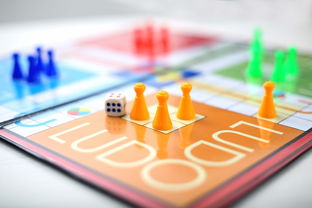Vietnam, a land rich in culture and history, is often recognized for its iconic rice fields, traditional festivals, and bustling cities. However, there is another intriguing aspect of Vietnamese culture that deserves recognition - the "Kim tự tháp" game. This game, known as the "Pyramid Game," has its roots deeply embedded in Vietnamese society and continues to be a cherished pastime even today.
The origins of the "Kim tự tháp" game are somewhat shrouded in mystery, but many believe it was introduced to Vietnam during its colonial period by French settlers. Regardless of its origin, this unique game has become an integral part of Vietnamese folklore, capturing the imagination of children and adults alike. It involves strategy, luck, and a touch of creativity, making it a delightful experience for all ages.
In its simplest form, the "Kim tự tháp" game consists of two players who start with a set number of sticks or small wooden blocks. The game's objective is straightforward - to strategically remove sticks without causing the structure to collapse. The challenge lies in determining the optimal time to make a move, balancing risk and reward with each action taken.
One variation of the game involves creating a pyramid-like structure using a specific number of sticks or blocks, which are then removed one by one by the players. The structure can vary in complexity and size, allowing for endless possibilities and variations in gameplay. Another version of the game involves arranging the sticks into intricate patterns or designs before commencing the removal process, adding an additional layer of creativity and skill to the game.

Players must exercise careful consideration when selecting which sticks to remove, as the structure's stability becomes increasingly precarious with each action taken. Removing too many sticks at once or targeting weak points in the structure can result in an unexpected collapse, causing the player to forfeit their turn and potentially leading to a premature end to the game. The key to success lies in anticipating the consequences of each move and maintaining control over the unfolding situation.
The "Kim tự tháp" game also serves as a platform for developing various skills, including strategic thinking, problem-solving, and critical analysis. As players engage in multiple rounds of the game, they gradually hone their abilities to assess potential outcomes and make calculated decisions, fostering cognitive development and enhancing overall mental acuity.
Moreover, the game encourages social interaction and bonding among participants, promoting teamwork and collaboration in achieving shared objectives. Players must communicate effectively, coordinate their efforts, and support one another throughout the course of the game, creating a positive and collaborative atmosphere that fosters interpersonal relationships.
In addition to its cultural significance, the "Kim tự tháp" game offers numerous educational benefits, making it an excellent tool for learning and personal growth. Its emphasis on logical reasoning, spatial awareness, and fine motor skills aligns with core academic competencies, enabling children to develop essential skills in a fun and engaging manner.
Furthermore, the game can be adapted to suit various age groups and skill levels, ensuring that everyone can participate and enjoy it regardless of their background or prior knowledge. For younger players, the game can serve as an introduction to basic mathematical concepts, such as counting, sequencing, and pattern recognition, while older players can explore more advanced topics like geometry and trigonometry through the game's structural components.
Overall, the "Kim tự tháp" game represents a fascinating facet of Vietnamese culture, blending tradition with innovation to create a captivating experience for all who engage with it. Its enduring popularity speaks volumes about its value and relevance in contemporary society, highlighting the power of cultural practices in shaping our collective identity and enriching our lives.
Ngày nay, trò chơi "Kim tự tháp" đã trở thành một phần không thể thiếu trong cuộc sống văn hóa và giải trí của người dân Việt Nam. Từ việc học cách tính toán, đưa ra quyết định đến việc tạo dựng mối quan hệ xã hội, trò chơi này cung cấp cho mọi người cơ hội để phát triển và rèn giũa nhiều kỹ năng khác nhau. Nó không chỉ là một trò chơi mà còn là một hình thức giáo dục, giúp chúng ta khám phá những khía cạnh mới mẻ về bản thân và văn hóa của mình.









